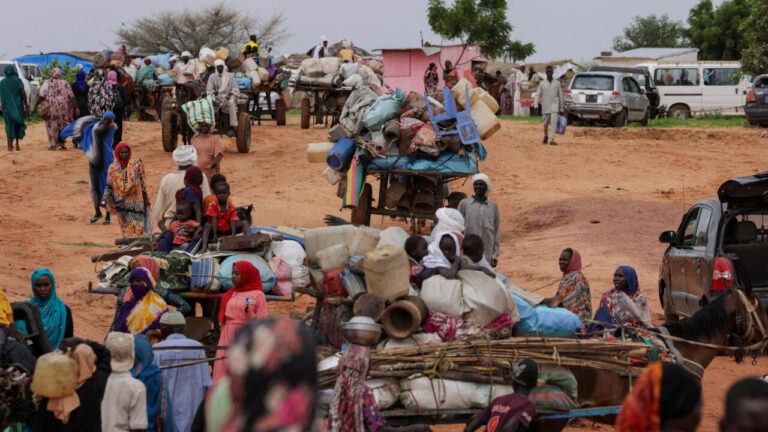The word “pivot” typically refers to the central point on which a mechanism turns. While apt for machinery, it might not wholly capture the essence of a geopolitical shift. President Barack Obama’s “Pivot to Asia” initially seemed more perplexing than illuminating regarding US foreign policy.
Intriguingly, its repercussions resonated more in the Middle East than Asia, highlighting the methods over the actual objective. In retrospect, “rebalancing” might be a more apt descriptor.
Since nomenclature is critical in geopolitics, it also applies to the Middle East’s so-called Pivot to Asia, which has captured attention recently. A 2022 Asia House report claims this will have a profound global impact over the next decade. The implication is that the Gulf countries are increasingly aligning with Asian rather than Western perspectives when making critical domestic and international decisions.
“Rapidly expanding ties between the Gulf and Asia are creating a fundamental global shift that will have far-ranging implications for international trade, business and politics,” the report stated, adding that GCC economic and social reform is accelerating and driving the pivot. The hypothesis understandably transcends the use of one word.
Moreover, the fundamentals on which the pivot is projected to operate are noteworthy. The report highlights that the cooperation between Asia and the Gulf Cooperation Council states in terms of renewables and sustainability is set to become a vital component of the pivot, as collaboration is growing in developing renewable energy and alternative energy sources. It foresees more significant bilateral political exchanges and cooperation, making this relationship “a significant pillar of global politics.”
The merits of this argument suggest a decisive shift backed by empirical evidence. However, the premise remains fixated on the US or the West’s strategic reorientation toward the Asia-Pacific region, focusing on addressing the rise of China and its growing influence. It is still about reallocating the military, economic and diplomatic resources to foster and secure American interests there.
It is in no one’s interest to ignore the Middle East’s strategic importance, oil reserves and security challenges.
Ehtesham Shahid

Observers agree that redirecting resources and attention toward the Asia-Pacific region has sometimes led to a perceived reduction in US engagement and influence in the Middle East.
Notwithstanding the facts behind such a claim, this has had implications for regional dynamics, with local and regional actors reassessing their strategies and alliances, considering changing American priorities and adjusting accordingly. Russia’s expanding military footprint and China’s economic partnerships in the Middle East have also substantiated this theory.
However, it is critical to understand that the Pivot to Asia — whether of the US or the Middle East — implies a shift in focus. It does not mean the US would not continue to maintain significant interests and a substantial presence in this region. It is in no one’s interest to ignore the Middle East’s strategic importance, oil reserves and the ongoing conflicts and security challenges.
On the other hand, the relationships between the Middle East and Asia-Pacific regions are multifaceted and include economic, energy and diaspora connections. Therefore, their respective policy implications are interconnected and not confined to a single sphere of influence or interest. In other words, the Middle East’s Pivot to Asia cannot be at the cost of the region’s traditional Western allies.
There is no denying that the Middle East is undergoing a geopolitical churning. The Saudi Arabia-Iran fault line defined these geopolitics for a long time. With a rapprochement on that front well and truly on and the spirit of reconciliation spreading far and wide, the region’s hope of a prosperous future appears set to transform into a reality.
Interestingly, another Middle East fault line — the Palestine-Israel conflict — also finally seems to be gravitating toward some resolution. If achieved anytime soon, it would be as much about a growing Chinese interest in it as a US administration looking to win another election.
With the spirit of reconciliation spreading, the region’s hope of a prosperous future appears set to transform into a reality.
Ehtesham Shahid
The circumstances in the Middle East have made countries of different shapes and sizes comfortable in asserting their geopolitical weight to safeguard their interests and make a difference. In the succinct words of a leading think tank, “sculpting a new geopolitical positioning through diversification may update the regional identity necessary to navigate a multipolar world.”
A combination of factors makes regional geopolitics pregnant with possibilities. These factors give rise to permutations and combinations that were unimaginable just a few years ago. The cascading effect leads from one positive development to another. The Abraham Accords led to the I2U2 (made up of India, Israel, the UAE and the US), while the expansion of BRICS and the G20 birthed the India-Middle East-Europe Economic Corridor.
Perhaps what remains to unfold is a genuinely regional geopolitical brainwave detached from the Middle East’s constant thrust to balance East and West. Only a regional geopolitical alignment can neutralize the echo chamber of global realpolitik, where regional perspectives set the agenda and priorities.
Returning to the pivot versus rebalance debate, it is arguable that Middle Eastern countries are adjusting their diplomatic stances, establishing stronger ties with Asian nations and occasionally counterbalancing East-West relations.
This does not entail a wholesale shift but it does indicate a diversification of partnerships as these nations maneuver through the intricate maze of global geopolitics, aiming to equilibrate their interests and alliances in a multipolar world. It is perhaps time to pivot toward counterbalancing.
Ehtesham Shahid for ArabNews








Leave a Comment